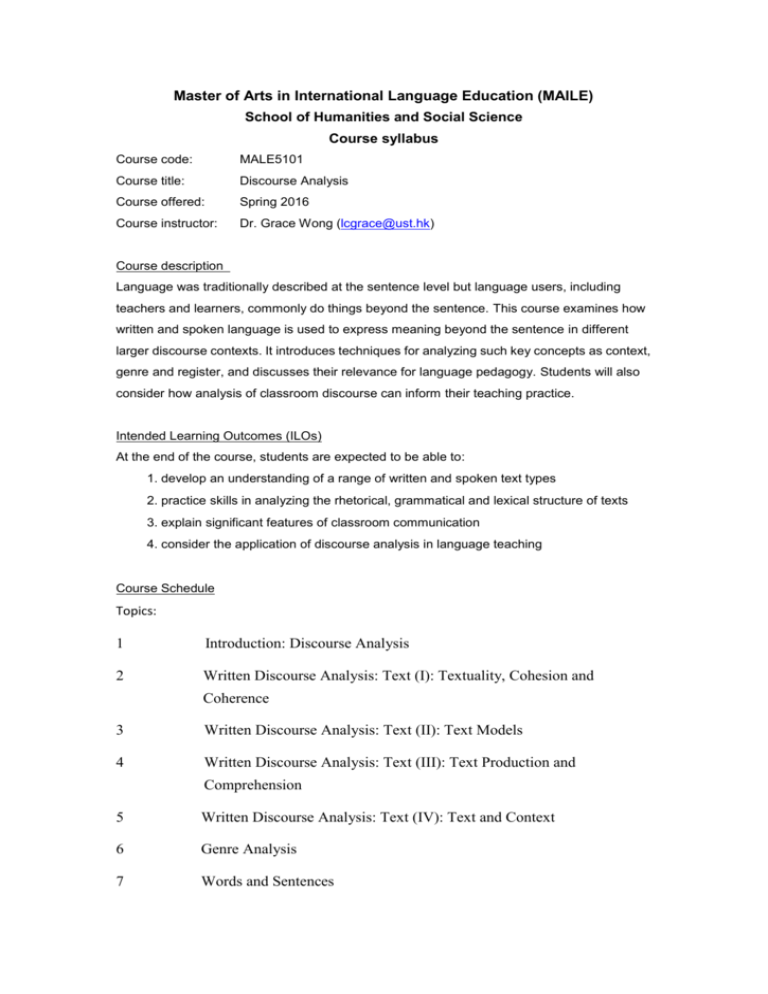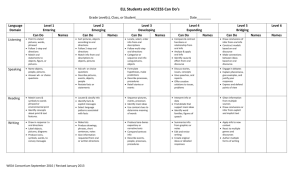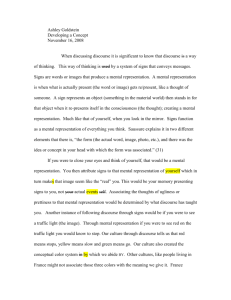MALE 5101 - School of Humanities and Social Science
advertisement

Master of Arts in International Language Education (MAILE) School of Humanities and Social Science Course syllabus Course code: MALE5101 Course title: Discourse Analysis Course offered: Spring 2016 Course instructor: Dr. Grace Wong (lcgrace@ust.hk) Course description Language was traditionally described at the sentence level but language users, including teachers and learners, commonly do things beyond the sentence. This course examines how written and spoken language is used to express meaning beyond the sentence in different larger discourse contexts. It introduces techniques for analyzing such key concepts as context, genre and register, and discusses their relevance for language pedagogy. Students will also consider how analysis of classroom discourse can inform their teaching practice. Intended Learning Outcomes (ILOs) At the end of the course, students are expected to be able to: 1. develop an understanding of a range of written and spoken text types 2. practice skills in analyzing the rhetorical, grammatical and lexical structure of texts 3. explain significant features of classroom communication 4. consider the application of discourse analysis in language teaching Course Schedule Topics: 1 Introduction: Discourse Analysis 2 Written Discourse Analysis: Text (I): Textuality, Cohesion and Coherence 3 Written Discourse Analysis: Text (II): Text Models 4 Written Discourse Analysis: Text (III): Text Production and Comprehension 5 Written Discourse Analysis: Text (IV): Text and Context 6 Genre Analysis 7 Words and Sentences 8 Spoken Discourse Analysis 9 Conversation Analysis & Negotiation of Meaning 10 Classroom Discourse Assessments: There are two types of assessment for this course: 1. Term paper 50% 2. Presentations on researched topics 50% Sample Course Readings: Bhatia, V. K. (1993). Analyzing genre: Language use in professional settings. London: Longman. Cook, G. (1989). Discourse. Oxford: Oxford University Press. Derewianka, B. (1990). Exploring how texts work. Rozelle, N.S.W.: Primary English Teaching Association. Gee, J. P. (2001). Discourse analysis: Theory and method. London: Routledge. Hyland, K. (2004). Genre and second language writing. Ann Arbor: University of Michigan Press. Hyland, K, & Paltridge, B. (Eds.) (2011). Continuum companion to discourse analysis. London: Continuum. Johnson, K. E. (1995). Understanding communication in second language classrooms. Cambridge: Cambridge University Press. Johnstone, B. (2008). Discourse analysis (2nd Ed.). Malden, Mass.: Blackwell. McCarthy, M. (1991). Discourse analysis for language teachers. Cambridge: Cambridge University Press. Paltridge, B. (2006). Discourse analysis: An introduction. London: Continuum. Rodney, J.H. (2012). Discourse analysis: A resource book for students. Oxon: Routledge. 岑绍基(2002). 語言功能與中文教學. 香港大學出版社 Tsui, A. B. M. (1995). Introducing classroom interaction. London: Penguin.






